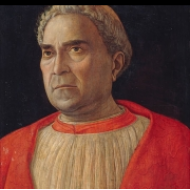Contents • • • • • Early Life and education [ ] Janson was born in in 1913 to Friedrich Janson (1875–1927) and Helene Porsch (Janson) (1879–1974), a Lutheran family of stock. After the, the family moved to Finland and then, where Janson attended the (graduated 1932). After his German, Janson studied at the and then at the art history program at the, where he was a student of. In 1935, at the suggestion of Panofsky, who had emigrated to the United States, sponsored Janson as an immigrant, and he completed a PhD at in 1942 (his dissertation was on ).
He taught at the (1936–38) and the (1938–41) while pursuing his degree. In 1941 he married Dora Jane Heineberg (1916–2002), an art history student at, and he became a citizen in 1943. Academic career [ ] Janson taught at from 1941 until 1949, when he joined the faculty of, where he developed the undergraduate arts department and taught at the graduate. He was recognized with an honorary degree in 1981 and died on a train between and in 1982 at the age of 68. He wrote about and nineteenth-century, and authored two prize-winning books, Apes and Ape Lore in the Middle Ages and the Renaissance (1952) and Sculpture of Donatello (1957). In his later years he was concerned with East–West dialogue in the arts.
History of Art [H. Janson] on Amazon.com. *FREE* shipping on qualifying offers. History of Art [Hardcover] [Jan 01, 1968] Janson, H. 1 Excerpted from H. Janson, History of Art, 5th ed. New York: Harry N. Abrams, 1995, 98 – 109. Aegean Art If we sail from the Nile Delta northwestward across the.


Audel Electronics Pocket Manual .pdf. Psiloc_irremote_s603rd.sisx Crack there. Over his career, Janson consulted on the Library of Art; was president of the, editor of the, and founding member and President of the. He also wrote books on art for young people, some in collaboration with his wife. Janson's signature contribution to the discipline of art history, specifically to the teaching of art history, is his survey text entitled simply History of Art, which was first published in 1962 and has since become the standard by which current art history textbooks are measured. Feminist critiques [ ] Despite or perhaps because of the popularity and influence of History of Art, it came under increased scrutiny by art historians, who sought a more inclusive story of Western art.